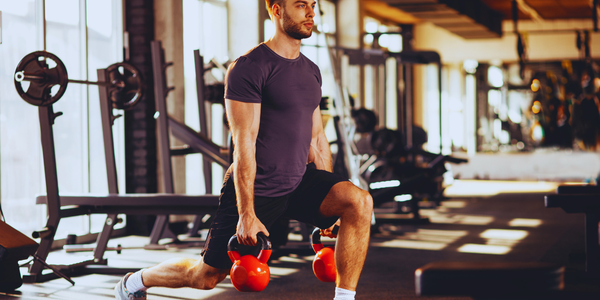Your Sleep Position Might Be Causing These Health Issues, Says Sleep Expert
Discover how your sleep position affects your health. Leading sleep expert Dr. Michael Breus explains common sleep-related issues and reveals the link between Sleep Position Health and well-being
https://www.youtube.com/watch?v=AUX9TZKvh6k
Did you know that up to 60% of people unknowingly harm their health by how they sleep? Sleep position health is more important than many people think. It can lead to chronic pain and even breathing problems.
Looking into sleep alignment techniques shows how our sleep affects our health. Side sleeping, for example, has benefits beyond just feeling comfortable.
Your sleep posture can cause many health issues. It can lead to neck pain and breathing problems. How you sleep affects your body and mind's recovery.
Key Takeaways
- Sleep positions directly influence physical health and recovery
- Side sleeping provides multiple health advantages
- Poor sleep posture can lead to chronic pain
- Individual sleep needs vary based on health conditions
- Proper sleep alignment can improve overall wellness
Understanding Sleep Position Health and Its Impact on Wellness
Sleep positions are key to our health and wellness. Knowing about sleep ergonomics can make a big difference in how well we sleep and feel. Sleep experts say that how we sleep affects our physical health.
Common Sleep Positions and Their Prevalence
Research shows interesting facts about sleep positions:
- More than 60% of people sleep on their sides.
- Men tend to sleep on their sides more often.
- About 50% of adults sleep on their sides, and this number goes up with age.
How Sleep Positions Affect Overall Health
Your sleep posture can greatly affect your health. Side sleeping is good for those with back pain. Studies show that people with back pain feel better when they sleep on their sides or backs.
Different sleep positions affect health in different ways:
- Back sleeping helps keep the spine aligned.
- Stomach sleeping can strain the neck and back.
- Left-side sleeping can help with acid reflux and improve blood flow.
The Science Behind Sleep Posture
Sleep ergonomics is more than just how you lie. Each position affects your body's alignment in different ways. Pregnant women should sleep on their left side for better blood flow. Back sleepers might manage neck pain better, but stomach sleepers could face more muscle issues.
Knowing what your body needs can help you find the best sleep position for health and comfort.
Major Health Concerns Associated with Different Sleep Positions
Sleep positions are crucial for our health and wellness. The position you sleep in can greatly affect pain and sleep position pain relief. Knowing how sleep positions impact your body is vital to avoid health problems.
Studies show interesting facts about sleep positions and health. Side sleeping is a great choice for those with certain health issues.
- Sleep Apnea Management: Side sleeping reduces sleep apnea symptoms by stopping throat muscle relaxation
- Acid Reflux Prevention: Left-side sleeping is better for preventing stomach acid from reaching the esophagus
- Back Pain Reduction: It can help reduce joint and shoulder pain
Each sleep position has its own health effects. Stomach sleeping, done by about 7% of people, can cause neck and lower back pain. On the other hand, side sleeping has many benefits.
| Sleep Position | Health Impact | Recommended For |
|---|---|---|
| Side Sleeping | Reduces sleep apnea risk | Pregnant women, acid reflux sufferers |
| Back Sleeping | Minimizes spine pressure | Individuals with lower back pain |
| Stomach Sleeping | Increases neck and back strain | Not recommended |
Using sleep position therapy can improve your health. Talking to a sleep specialist can give you advice that fits your health needs and comfort.
Optimizing Your Sleep Position for Better Health
Creating the perfect sleep environment is more than just picking a comfy bed. Your sleep position, pillows, and mattress are key to keeping you healthy and pain-free.
Pillow Placement Strategies for Optimal Support
Sleep position pillows are vital for keeping your spine aligned. The right pillow placement can greatly lessen physical discomfort, based on how you sleep:
- Side sleepers should use a firm pillow between the knees to reduce hip and lower back stress
- Back sleepers need pillows that support the head, neck, and shoulders
- Stomach sleepers require flatter pillows to minimize neck tension
Selecting the Right Sleep Position Mattresses
Choosing the right mattress can change your sleep for the better. The National Sleep Foundation suggests replacing mattresses every 6-8 years for the best support.
| Sleep Position | Recommended Mattress Firmness | Key Considerations |
|---|---|---|
| Side Sleepers | Medium-soft | Pressure relief for shoulders and hips |
| Back Sleepers | Medium-firm | Spinal alignment support |
| Stomach Sleepers | Firm | Prevent lower back strain |
Ergonomic Adjustments for Pain Prevention
Making simple ergonomic changes can greatly improve your sleep. Proper positioning can help reduce back, which affects about 80% of people at some point.
By knowing your body's needs and using supportive pillows and mattresses, you can make a sleep space that heals and comforts you.
Conclusion
Understanding sleep position health is key to overall wellness. It affects your heart, breathing, and pain levels. Sleep apnea, affecting up to 34% of men and 17% of women, shows how crucial it is.
Finding the right sleep position is a personal journey. Experts like Dr. Redline say sleep impacts blood vessels and the immune system. Paying attention to your sleep can lower risks of sleep apnea and pain.
Your sleep plan should be unique to you. Most adults need 7 to 9 hours of sleep each night. Quality sleep is just as important as quantity. Talk to doctors to find the best sleep position for you.
Staying up-to-date with sleep research helps you make better choices. Your body needs the best sleep. Knowing your optimal sleep position is a big step towards better health.
FAQ
What is the best sleep position for overall health?
Back sleeping is often the best choice. It keeps your spine straight, eases joint pressure, and helps with acid reflux. But, side sleeping is good for some, like those with certain health issues.
Can my sleep position really affect my health?
Yes, it can. Your sleep position affects your spine, breathing, and circulation. It can help or hurt conditions like back pain, sleep apnea, acid reflux, and neck strain.
How can I improve my current sleep position?
First, check your pillow and mattress. Back sleepers need a neck-supporting pillow. Side sleepers should use a knee pillow. Try to avoid stomach sleeping to prevent neck and back strain.
Is stomach sleeping really that bad?
Stomach sleeping is not recommended. It puts a lot of pressure on your neck and spine. This can lead to back pain and joint strain.
What type of pillow should I use for my sleep position?
The right pillow depends on your sleep position. Back sleepers need a thin pillow. Side sleepers prefer thicker, firmer ones. Memory foam and contoured pillows offer great support.
Can changing my sleep position help with specific health issues?
Yes, changing positions can help with health problems. Left-side sleeping can reduce acid reflux. Back sleeping can ease neck and back pain. Elevated head positioning can help with sleep apnea.
How long does it take to adjust to a new sleep position?
It usually takes 2-3 weeks to adjust. Be patient and use aids like body pillows to make the change easier.
Are there any special considerations for people with chronic pain?
People with chronic pain should talk to a doctor about sleep positions. Generally, keeping your spine straight and using supportive pillows can help reduce pain and improve sleep.
Source Links
- Is There a 'Best' Sleep Position?
- This sleep position wreaks havoc on your health: experts
- Best Sleeping Positions
- What to Know About Sleeping Positions and Sleep Quality
- What Does Your Sleeping Position Say About You?
- What Your Sleep Position Says About Your Health
- How Your Sleep Position Affects Your Health
- Best Sleeping Position for Your Health
- Content - Health Encyclopedia - University of Rochester Medical Center
- Can sleep position affect your heart and brain health?
- Examining relationships between sleep posture, waking spinal symptoms and quality of sleep: A cross sectional study
👉 Join the Active Man Community
Get expert tips, workout guides, nutrition hacks, and the latest trends delivered straight to your inbox every week. No spam — just actionable insights to help you live stronger, healthier, and better.





